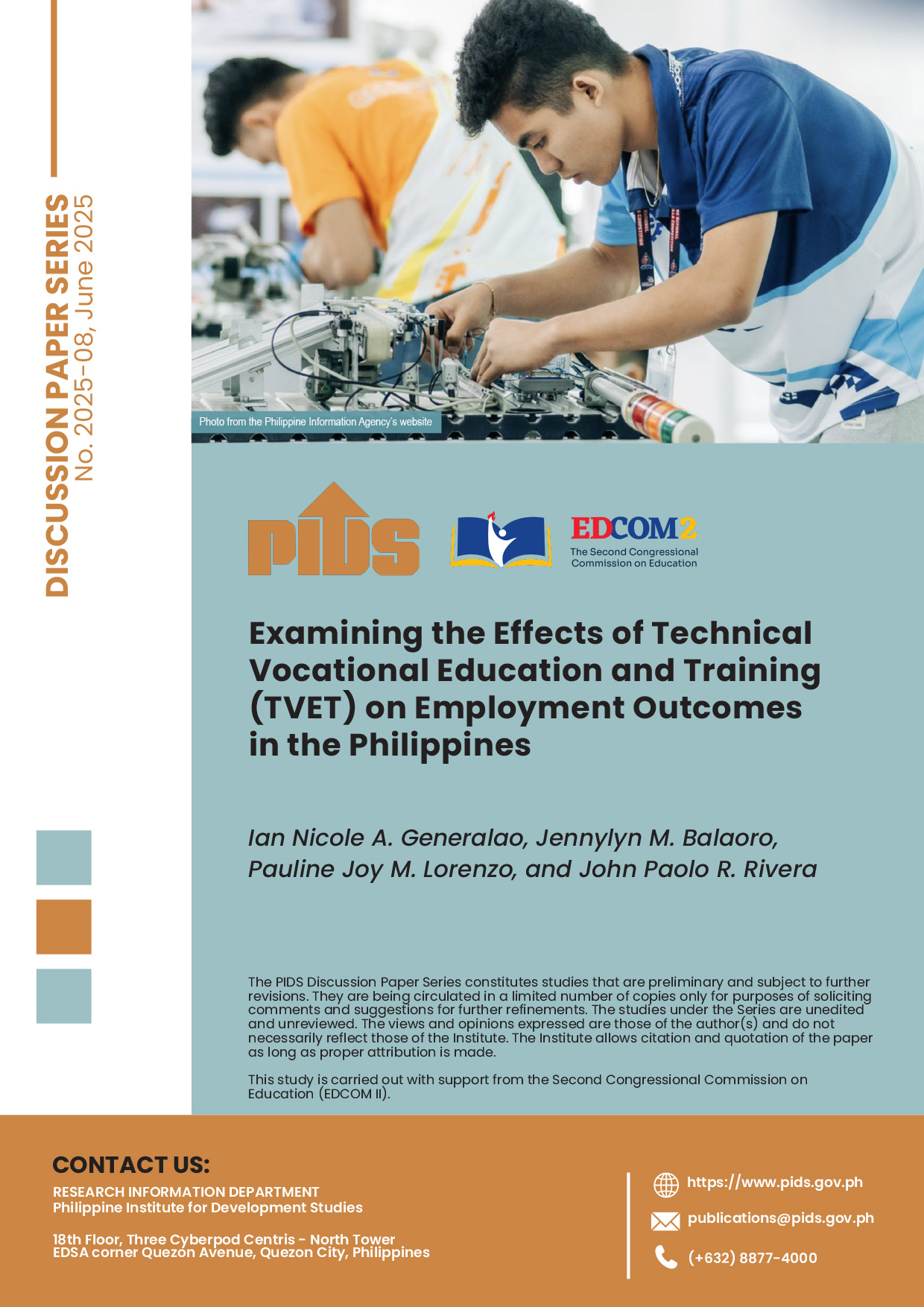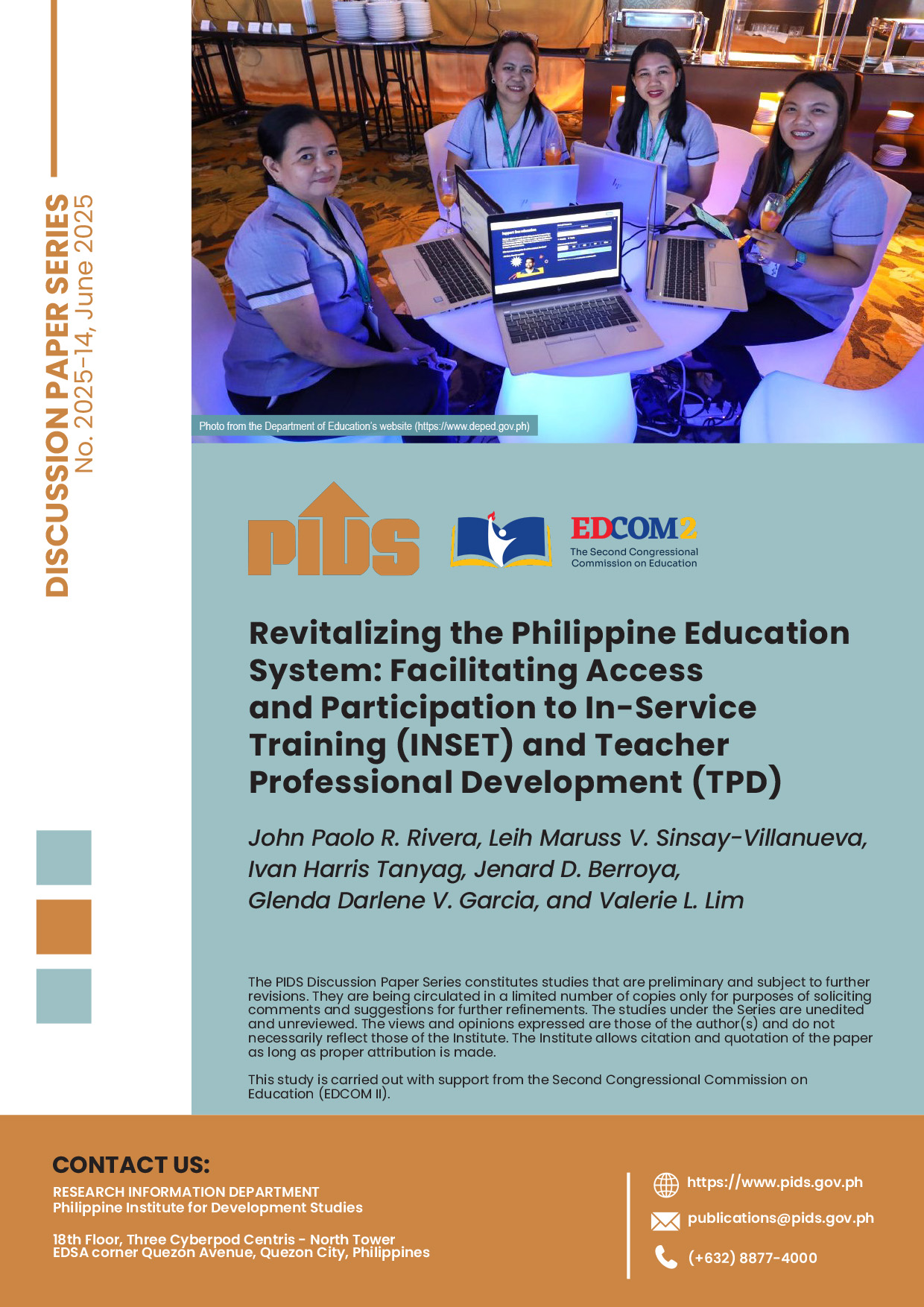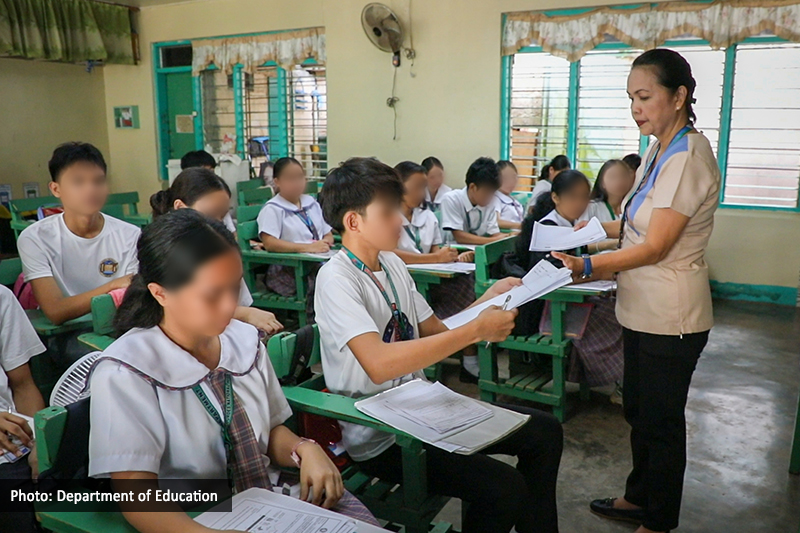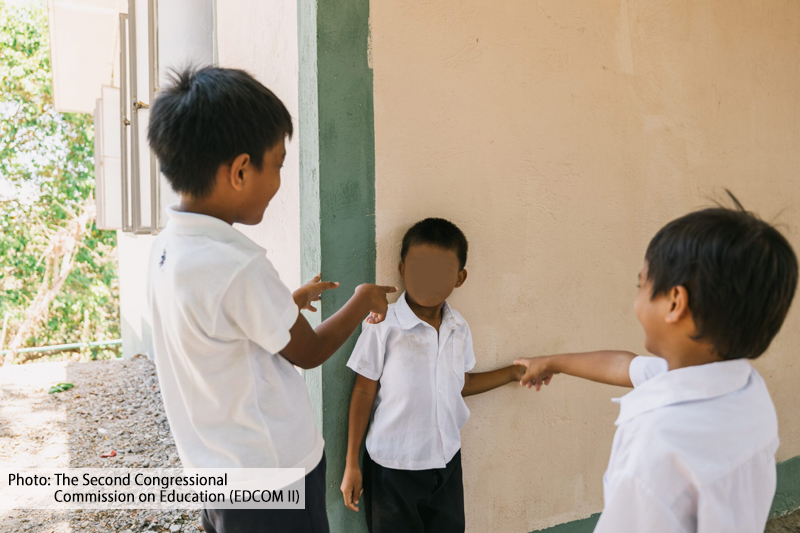The Philippines is unlikely to achieve its goal on two key international commitments for the achievement of education for everyonethe Millennium Development Goals (MDGs) on Education and the Education for All (EFA) Initiative.
Based on a study done by Dr. Dalisay Maligalig, senior statistician at the Asian Development Bank, and Dr. Jose Ramon Albert, senior research fellow at the state think tank Philippine Institute for Development Studies, a closer look at the figures would show that the country may be at risk of not achieving its goal of achieving universal primary education by 2015.
This is despite of the 94 percent net enrolment ratio and the 95 percent literacy rate for the youth in 20002004 that it achieved in 2004.
For one, compared to the 1991 figures where both net enrolment ratio and youth literacy rate registered at 97 percent, there has been a slight decline in said indicators in recent years. In addition, the proportion of pupils who started Grade 1 and reached Grade 5 has remained almost at the same level, i.e., 74 percent for the 1991 baseline and 75 percent for 2004. Hence, hardly any improvement has been registered in this aspect.
For the MDG target of eliminating gender disparity in primary and secondary education, meanwhile, the study pointed out that education indicators show that at all levelsprimary, secondary, and tertiaryfemales are at an advantage over males, with the differences growing as the level of education increases. This suggests that a new set of disparities between sexes may be in the offing.
The two experts also feared that the current and continuing increase in food prices, especially rice, the staple food of most Filipinos, will further contribute to the decline in school participation. Based on the Annual Poverty Indicator Survey (APIS) conducted by the NSO, it was found out that Filipino families spends more on food and utilities over education and health.
Given the current situation, Maligalig and Albert suggested that the government should intensify its efforts in improving basic education by having evidence-based policies and actions. In particular, they noted that the Department of Education (DepEd) should be required to have a sound monitoring and evaluation system to regularly assess the conditions of basic education.
Statistics on education can be a powerful instrument to get the attention of policymakers and the public regarding the state of basic education. It is therefore essential that the set of indicators for the EFA 2015 such as literacy rate, proportion of pupils who started Grade 1 and reached Grade 5, and net enrolment ratio, be reviewed in order that each development milestone is represented, the authors emphasized. Likewise, they suggested that issues such as incomplete coverage because of the noncompliance of the private schools to report timely data due to the lack of information about children who have not been part of the education system, must be addressed by carefully studying the proposed set of indicators.
Comparable measures across time and space will help assist policymakers see linkages in policy actions. To judge the soundness of policies, one would ideally like to monitor their effects and evaluate the outcomes based on comparable statistics. Rigorous analysis of this kind is needed to improve the design of projects and programs and to weed out interventions that are not working, the experts concluded.
Based on a study done by Dr. Dalisay Maligalig, senior statistician at the Asian Development Bank, and Dr. Jose Ramon Albert, senior research fellow at the state think tank Philippine Institute for Development Studies, a closer look at the figures would show that the country may be at risk of not achieving its goal of achieving universal primary education by 2015.
This is despite of the 94 percent net enrolment ratio and the 95 percent literacy rate for the youth in 20002004 that it achieved in 2004.
For one, compared to the 1991 figures where both net enrolment ratio and youth literacy rate registered at 97 percent, there has been a slight decline in said indicators in recent years. In addition, the proportion of pupils who started Grade 1 and reached Grade 5 has remained almost at the same level, i.e., 74 percent for the 1991 baseline and 75 percent for 2004. Hence, hardly any improvement has been registered in this aspect.
For the MDG target of eliminating gender disparity in primary and secondary education, meanwhile, the study pointed out that education indicators show that at all levelsprimary, secondary, and tertiaryfemales are at an advantage over males, with the differences growing as the level of education increases. This suggests that a new set of disparities between sexes may be in the offing.
The two experts also feared that the current and continuing increase in food prices, especially rice, the staple food of most Filipinos, will further contribute to the decline in school participation. Based on the Annual Poverty Indicator Survey (APIS) conducted by the NSO, it was found out that Filipino families spends more on food and utilities over education and health.
Given the current situation, Maligalig and Albert suggested that the government should intensify its efforts in improving basic education by having evidence-based policies and actions. In particular, they noted that the Department of Education (DepEd) should be required to have a sound monitoring and evaluation system to regularly assess the conditions of basic education.
Statistics on education can be a powerful instrument to get the attention of policymakers and the public regarding the state of basic education. It is therefore essential that the set of indicators for the EFA 2015 such as literacy rate, proportion of pupils who started Grade 1 and reached Grade 5, and net enrolment ratio, be reviewed in order that each development milestone is represented, the authors emphasized. Likewise, they suggested that issues such as incomplete coverage because of the noncompliance of the private schools to report timely data due to the lack of information about children who have not been part of the education system, must be addressed by carefully studying the proposed set of indicators.
Comparable measures across time and space will help assist policymakers see linkages in policy actions. To judge the soundness of policies, one would ideally like to monitor their effects and evaluate the outcomes based on comparable statistics. Rigorous analysis of this kind is needed to improve the design of projects and programs and to weed out interventions that are not working, the experts concluded.












